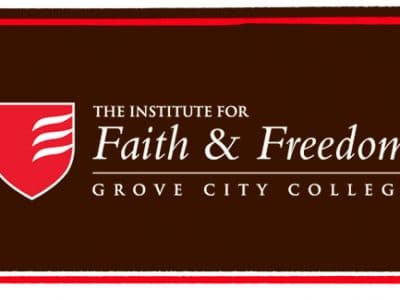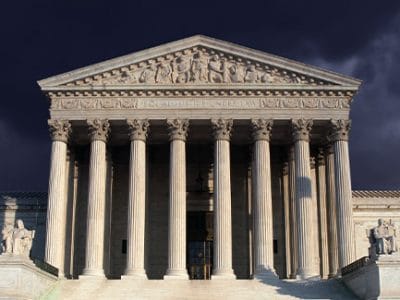From the tragedy of Anna Nicole Smith to the ongoing weird worlds of Madonna, Michael Jackson, Paris Hilton, and Brad and Angelina and Jen—has there ever been a time when Hollywood was normal? Not really.
Once upon a time, however, Hollywood was certainly more conventional, as captured by films by the likes of John Ford and Frank Capra. Believe it or not, the motion picture industry even had its share of conservative Republicans: Bob Hope, Jimmy Stewart, John Wayne, Glenn Ford, Barbara Stanwyck, Ginger Rogers, Claudette Colbert, to name a few. There was even a time when Hollywood produced a president.
This February, America marks the birth of two great presidents: George Washington and Abraham Lincoln. It so happens that another president was born in February: Ronald Reagan.
Among these February presidents, it was Reagan’s résumé that was least likely to forge a president. Indeed, Ronald Reagan’s Hollywood background was ridiculed, as if it was unbefitting of the presidency.
In fact, there remains much about Reagan in Hollywood that has gone unreported. Recovering that information is not only valuable for history’s sake, but also in understanding what motivated this actor who became president. There was much more to Reagan in Hollywood than “Bedtime for Bonzo.”
Beginning in 1937, Reagan made 53 films. By the late 1940s, however, the offers slowed considerably. He started replacing pictures with political activism and union work as president of the Screen Actors Guild (SAG).
It was during this time that Reagan’s political interests went global. The liberal Democrat spoke forcefully against Nazism. But the times were changing. Now, he judged, America faced a new enemy: Soviet communism. And therein, Reagan’s first public confrontation with the USSR has been missed by historians:
Reagan spoke on behalf of the “DPs,” the Displaced Persons. A daily headline in 1947, the DPs were initially survivors of World War II fascism, mainly from Germany, Italy, and Austria, and were primarily persecuted Jews. Once the war ended, the designated list of DPs widened to 1.5 million individuals escaping Soviet-occupied Eastern Europe.
The DPs were held in camps, at large cost to the United States. Soviet officials outrageously claimed that the United States was holding the DPs as a source of slave labor—a charge dismissed by Eleanor Roosevelt, who was intimately involved in the issue, as “utterly untrue.” Moscow insisted the DPs be forcibly transported to areas under Soviet control. Secretary of State George Marshall adamantly rejected the demand.
A bill was introduced by Congressman William Stratton (R-IL) to permit entry of 400,000 DPs into the United States—a lifeboat. Yet, the legislation faced stiff opposition, which Reagan resisted. “There are some people who would rather bury the Stratton bill … and thus bury the DPs in a mass grave,” protested Reagan. “They would be burying Protestants, Catholics, and Jews alike.”
On May 7, 1947, Reagan released a SAG statement urging passage of the Stratton bill. It was his first campaign against the Kremlin.
As Reagan’s political interests intensified, his movie career waned. In February 1954, he turned to a stint in a Vegas vaudeville act at the aptly named Last Frontier hotel. Despite this setback, he remained resolute, telling his new bride, Nancy, that everything would work out. “God has a plan,” he assured her.
As Reagan kept his optimism, CBS executives kept an eye on Reagan as an ideal host for their programming—as quintessentially American. They hired him to host the new GE Theatre.
This new position made Reagan one of the most recognized names in America, lending him the notoriety he would later parley into a presidential run. Two-thirds of homes already owned at least one TV, with few stations on the dial. More, GE Theatre was a smash, eclipsing I Love Lucy only weeks into its debut, and attracting the very best talent: Ethel Barrymore, Joseph Cotton, Bette Davis, Judy Garland.
What is forgotten, however, is that on several occasions Reagan fought the Cold War during GE Theatre episodes. For example, at the close of a February 3, 1957 broadcast, he put in a word for Hungarian refugees, fresh off a merciless Soviet invasion. “Ladies and gentlemen, about 160,000 Hungarian refugees have reached safety in Austria,” reported Reagan to his huge audience. “More are expected. These people need food, clothes, medicine, and shelter.” He told his fellow Americans to send donations to the Red Cross or church or synagogue of their choice.
There were other GE Theatre occasions where Reagan assumed political roles. Special to him was a two-part broadcast titled, “My Dark Days,” aired on March 18 and 25, 1962. Based on a true story, Reagan starred as the husband of a housewife who got involved with a communist front group and became an informant.
He later complained to a friend of the difficulties he faced getting the show produced: “I had to fight right down to the wire to make the communists villains.” The problem, explained Reagan, was that the producing staff believed that communist infiltration was a fantasy “dreamed up” by “right-wingers.”
Hollywood gave Reagan the platform to issue these robust messages. Further, the union leader’s tough negotiations on behalf of his fellow actors, and the death threats he faced in battling communists infiltrating the industry—he slept with a Smith & Wesson revolver—further steeled him. Rather than making him unworthy of the Oval Office, Ronald Reagan’s Hollywood background helped make him president, and emboldened him to take on Soviet communism and to try to win the Cold War and change history.
Not bad for a product of Hollywood—and worthy of a historical footnote or two.




